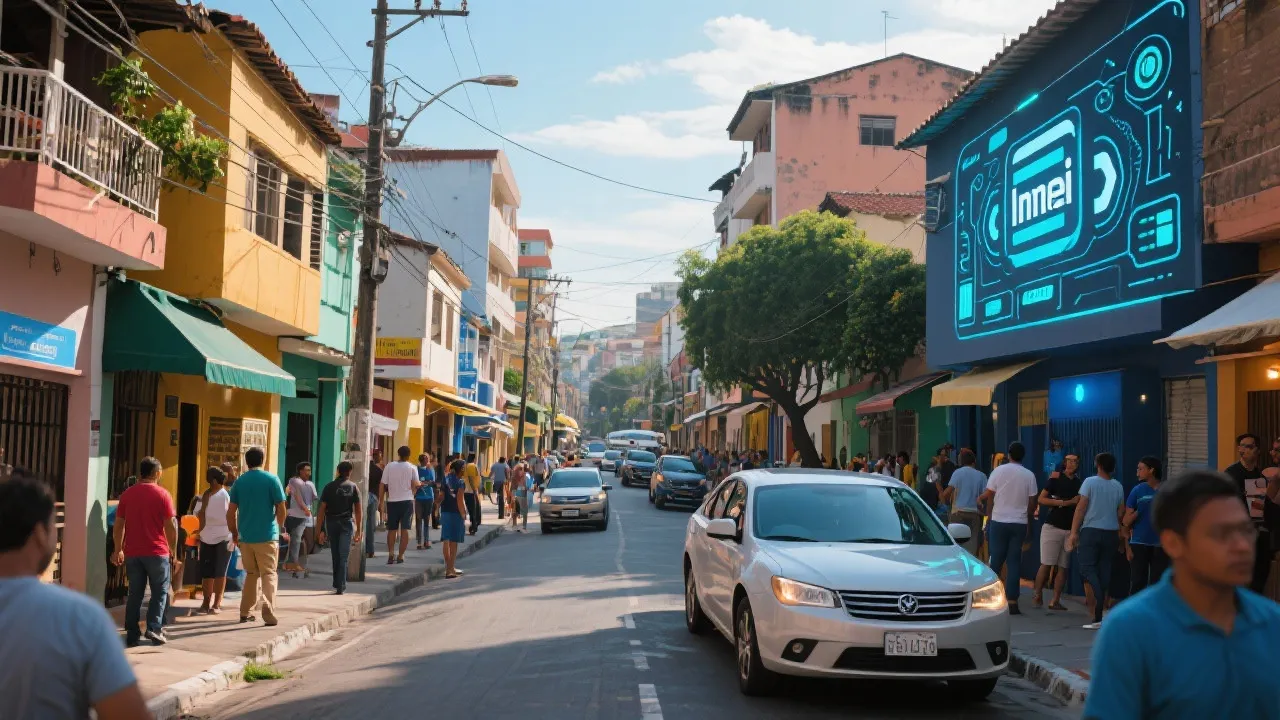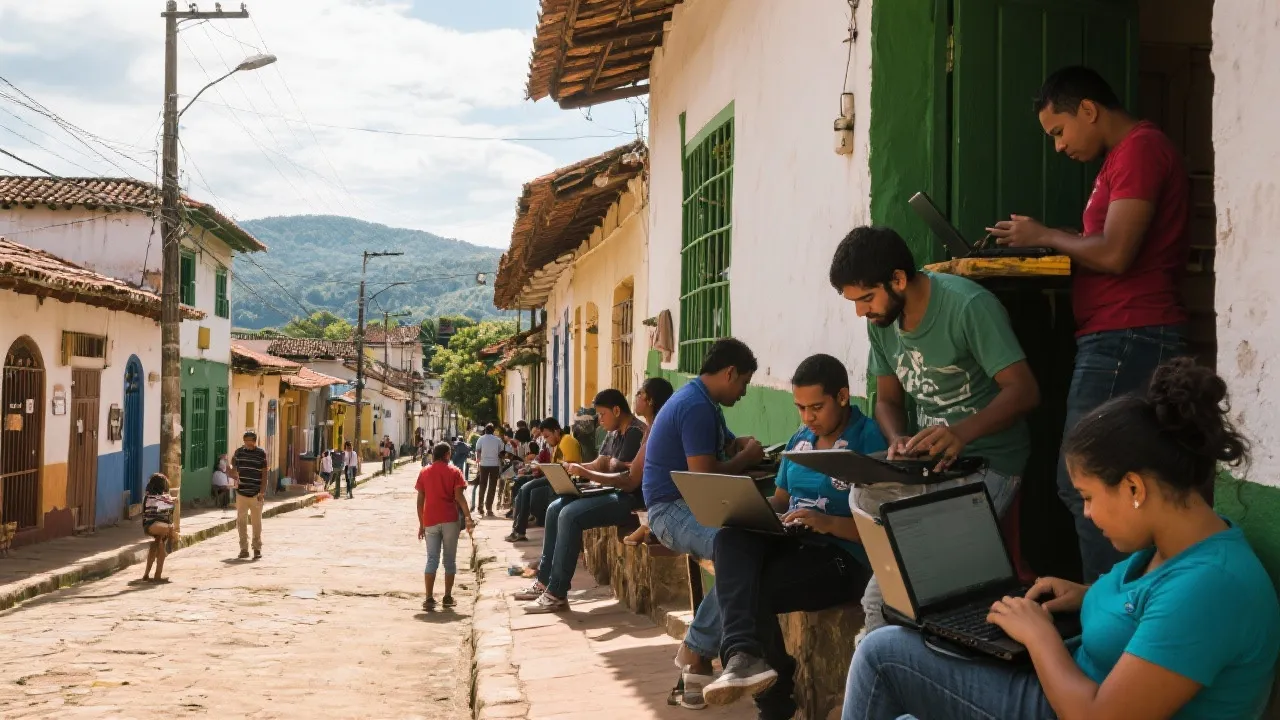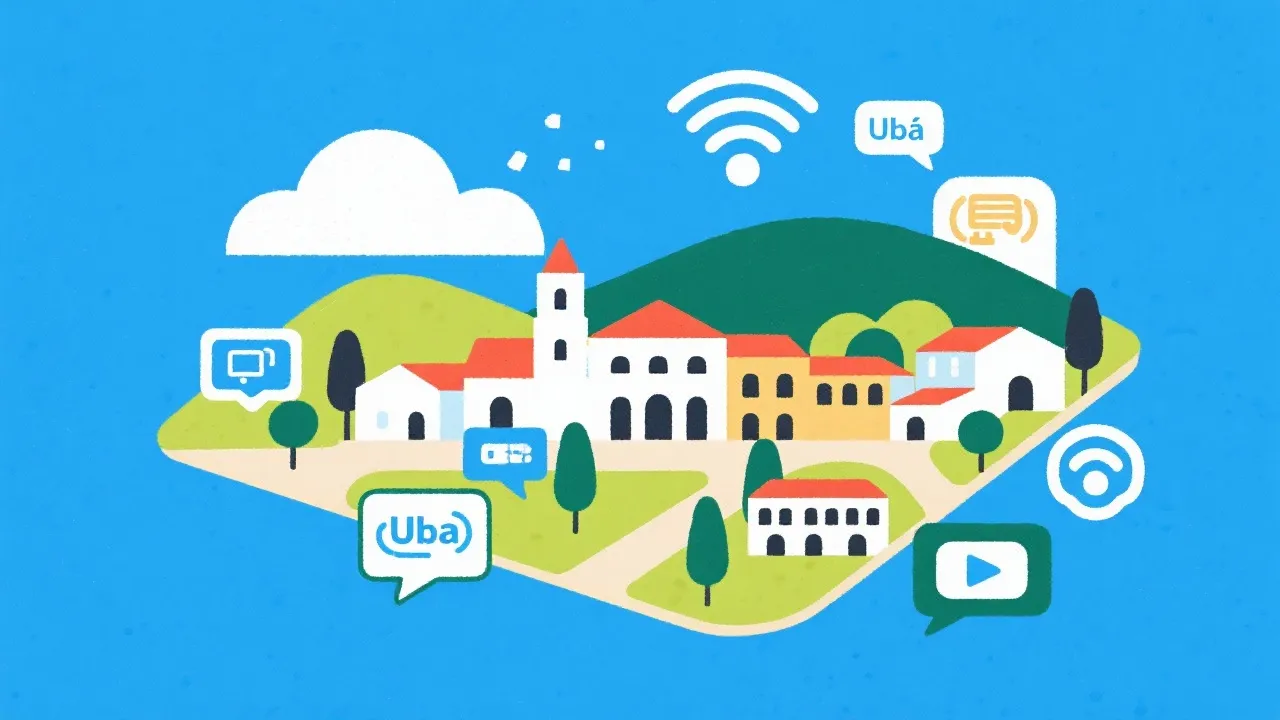Exploring Internet Options near Ubá
This guide provides an in-depth analysis of internet service options near the city of Ubá, focusing on diverse packages and how they relate to the local lifestyle. Ubá, a city in Brazil, embraces technology and connectivity, which are vital for both personal and professional environments. In this context, examining various internet plans can help residents make informed decisions to meet their digital needs.

Finding the Right Internet Service near Ubá
In the beautiful city near Ubá, staying connected is more crucial than ever as both personal and business lives are increasingly online. Understanding the available internet service options is vital for residents looking to invest in a reliable digital connection. This article provides insights into various internet plans, pricing, and providers to meet the specific needs of the locals. Additionally, with advances in technology and changes in consumer behavior, it’s essential to assess how these factors influence internet service selection.
Comparison of Internet Service Packages
There are several internet service providers offering different packages based on speed, cost, and additional features. Below is a comparison table to help you evaluate which plan might best suit your needs:
| Provider | Plan | Price | Speed | Data Cap | Contract Terms |
|---|---|---|---|---|---|
| Xfinity Internet | Connect | $19.99/month | Up to 50 Mbps | 1.2 TB | No contracts |
| AT&T Fiber | Fiber Internet 300 | $55/month | 300 Mbps | Unlimited | No contracts |
| Spectrum Internet | Starts at | $50/month | 500 Mbps | Unlimited | No contracts |
| T-Mobile 5G | Home Internet | $35-$70/month | 72-245 Mbps | Unlimited | No contracts |
| Astound Broadband | 300 Mbps | $20/month | Up to 300 Mbps | Unlimited | No contracts |
| Verizon Fios | 300 Mbps | $49.99/month | Up to 300 Mbps | Unlimited | 12-month contract |
Source: [Xfinity](www.xfinity.com), [AT&T](www.att.com/internet/fiber/), [Spectrum](www.spectrum.com), [T-Mobile](www.t-mobile.com/isp), [Astound](www.astound.com), [Verizon](www.verizon.com/home/fios)
Understanding Internet Access on a Budget
Finding affordable internet solutions is possible with some strategic planning. Here are steps to secure budget-friendly internet services that do not compromise on quality:
- Research and compare different providers to find introductory offers: Many companies lure customers with reduced prices for the first year, making it important to check the long-term cost.
- Evaluate your actual speed requirements: Understand that what may seem attractive as the maximum speed may not necessarily be what you need. For casual browsing and streaming, 25 to 50 Mbps may suffice, while gaming or heavy downloads may require higher speeds.
- Consider bundled services: Opt for packages that include internet, TV, and phone services for overall savings. This can sometimes yield significant discounts on the total monthly bill.
- Check eligibility for subsidies or community programs: Certain regions host programs that cater to low-income families or discounted services for students and educators, which could offset costs substantially.
- Explore promotional periods: Some providers run seasonal promotions that offer lower rates. Keep an ear to the ground for any potential discounts during events like Black Friday or back-to-school sales.
- Ask about loyalty discounts: If you’ve been with a provider for a while, they may offer you special retention discounts to keep you from switching to another service.
Global Internet Pricing Insights
To understand the internet pricing structure, here's a summary of typical price ranges in several countries, rephrased for clarity:
- United States: Internet costs range from approximately $30 - $100+, with an extensive array of options available, particularly in urban areas where speeds can range from 100 Mbps to over 1 Gbps.
- United Kingdom: Prices approximate between £25 - £60+, with choices mostly involving fiber or broadband services, capable of delivering speeds between 30 Mbps and 100 Mbps.
- Canada: Prices are around CAD 50 - CAD 100+, with various packages offering speeds from 25 Mbps up to 1 Gbps. Notably, rural areas may experience limited options and slower speeds.{/li}
- New Zealand: Costs range from NZD 60 - NZD 100+, with the predominant use of fiber or VDSL, achieving speeds of 100 Mbps or more. Time investments in infrastructure improvements aim to boost accessibility across the country.
- Australia: With prices between AUD 60 - AUD 110+, fiber network accessibility is rising, offering speeds typically ranging from 50 Mbps to 100 Mbps. Remote areas, however, often remain dependent on slower technologies.
- Singapore: Pricing spans SGD 30 - SGD 60+, and the competitive market provides high-speed fiber internet frequently reaching up to 1 Gbps, making it one of the fastest-connected nations globally.
Technological Innovations Impacting Internet Services
As technology evolves, the landscape of internet services continues to transform. Several key innovations and trends are shaping the future of connectivity:
1. 5G Technology
The rollout of 5G technology is a pivotal moment for internet connectivity, especially with its ability to offer significantly higher speeds, lower latency, and improved capacity. This technology not only enhances mobile internet access but is also establishing potential fixes for fixed broadband services in rural areas through viable home internet solutions. As 5G networks expand, many cities are starting to adopt them, promising higher speeds that rival traditional wired connections.
2. Mesh Wi-Fi Systems
Mesh Wi-Fi systems have become increasingly popular in residential settings, especially for larger homes. Unlike traditional routers, a mesh network utilizes multiple nodes that communicate with each other to provide comprehensive coverage throughout the property. This improvement minimizes dead spots and ensures users maintain a strong connection regardless of where they are in the home.
3. Satellite Internet Improvements
While traditionally considered slow and unreliable, satellite internet is undergoing a renaissance with new technologies from companies like SpaceX's Starlink. These advancements aim to enhance speeds and accessibility for rural and underserved areas, providing alternatives to traditional DSL or cable internet.
4. Increased Dependency on Fiber Optics
Fiber optic connections are becoming the gold standard for high-speed internet access. With capacity for greater data transmission and minimal latency, many providers are investing heavily in expanding fiber infrastructure. Residents in urban areas are benefitting from faster connections, while rural areas are seeing gradual improvements as well.
5. Internet of Things (IoT)
The rise of IoT devices is also impacting internet services. Smart home technology, wearables, and connected appliances require robust internet connections. Providers are beginning to account for higher bandwidth needs as average household device counts soar, leading to regional plans that offer higher data thresholds and speeds.
FAQs
Q: What should I consider when choosing an internet provider?
A: Consider the speed, price, customer service, available features, and any contracts or commitments involved in the service. It’s also crucial to check customer reviews regarding reliability in your local area.
Q: Are there benefits to bundling internet with other services?
A: Yes, bundling internet with TV or phone services may offer discounts and convenience in bill payment. Often, providers incentivize bundles to lock in customers and reduce churn rates.
Q: How can I improve my home internet speed?
A: Check for promotions or upgrades from your current provider, optimize your equipment setup (e.g., placing the router in a central location), and reduce the number of connected devices during peak usage times. Using ethernet connections for stationary devices can also enhance speeds.
Q: Why is internet speed important?
A: Internet speed affects the quality of streaming, gaming, video conferencing, and general browsing experiences. Faster speeds enable multiple users to utilize the same connection without lagging or interruptions, making it essential for households with various internet usage patterns.
Conclusion
For those residing near Ubá, understanding the intricacies of internet services, options, and costs is essential for maintaining connectivity in an increasingly digital world. This awareness becomes even more crucial as more services and conveniences become available online. By comparing plans, taking advantage of special offers, and considering future technological innovations, individuals can find an internet service that fits both their budget and usage needs. When navigating such choices, locales like Ubá will benefit from leveraging community input and staying informed about emerging trends in telecommunications.
Disclaimer: The above information is sourced from online resources, and data is accurate as of October 2023. Specific access requirements and methods are determined by the official website of each internet service provider. This article will not be updated in real-time, thus, it is advisable to verify details directly with service providers for any adjustments in their offers.
Reference Links: [Xfinity](www.xfinity.com), [AT&T](www.att.com/internet/fiber/), [Spectrum](www.spectrum.com), [T-Mobile](www.t-mobile.com/isp), [Astound](www.astound.com), [Verizon](www.verizon.com/home/fios)
-
1

Reducing Costs and Enhancing Technology in Solar Panels
-
2

Affordable Life Insurance Options for Seniors
-
3

Comprehensive Guide to Choosing the Right Smartphone
-
4

Unlock Affordable Online Learning: A Seniors’ Guide to Economical Educational Opportunities
-
5

Discover the Keys to Landing Your Perfect Work-from-Home Job: An Essential Guide









